Bulldogs are one of the most recognisable breeds because of their hefty bodies, cute, wrinkled faces and pushed in noses. They are one of the more popular pure breeds, mainly because of their docile and loveable nature and courageous personality.
About the Bulldog
Bulldogs can be known by many names including English Bulldog, British Bulldog, French Bulldog and American Bulldog. There is also an Australian Bulldog which is a mix of Staffordshire Bull Terrier and British Bulldog.
The average Bulldog is 30 – 38cms in height, weighs 18 – 23kgs and generally lives between 10 – 12 years.
A Bulldogs colouring is usually red, fawn, white, brindle and piebald (pigmented spots on an unpigmented white background) or a combination thereof. There are usually thick folds of skin under their eyebrows, jowls under their neck and an under bite with an upturned jaw. Their tail is naturally short and either straight or screwed.
Bark Busters have trained thousdands of Bulldogs because behind that affectionate nature is a stubbornness and wilfulness to be in charge!
Early training and socialisation and constant leadership is suggested or you will have a dog that is "bull-headed".
History
Bulldogs were originally bred in England dating back to the 13th century and their main purpose was bullbaiting. In bullbaiting, numerous dogs were used, with wagers placed on each dog, pitting the dogs against a tethered bull. The dog that grabbed the bull by the nose and pinned it to the ground was the winner.
The English Nobles considered the Bulldog a 'savage breed' and was associated with the lower classes of society. It is believed that the introduction of formal dog shows in the mid 1800's saved the breed from extinction. The Bulldog was adopted by breeders to breed certain characteristics into the breed, and it has evolved to be the dog that we know today. The Bulldogs prior to the 1800's looked very different with longer legs, longer noses and much slender muscular bodies.
When bullbaiting was outlawed in 1835 under the Cruelty to Animals Act, the Old English Bulldog was crossbred to create a more affectionate family pet. The Bulldog retained its protective and fearless nature, but aggressive and ferocious tendencies were removed from the breed.
Now Bulldogs are known for being lovers not fighters!
Management

Even though this breed looks grumpy, a Bulldog's personality is by nature lovable and sweet. However, it's tenacity and resolve mean that it's difficult to change their mind once they decide to do something. It is important that you establish good leadership right from the start, or they can be very controlling. They respond well to the Bark Busters style of training which is based on all-natural communication and positive techniques.
Dogs learn how to communicate with each other as a member of the pack on their mother's teats. Their mum gets them to behave not by using treats or ignoring bad behaviour but by using dog body language and communication. That is exactly what the Bark Busters style of training teaches; how to communicate between human and dog. We teach you how to set rules and boundaries early on. Good training involves repetition, positive reinforcement, and consistency. You need to show your Bulldog that you are a good leader and that you have it covered.
The good news is that although Bulldogs are slow to mature, once they have grown up, they seem to stay out of trouble. We have seen Bulldogs with serious cases of food guarding, which is why we don't recommend feeding them around children or other pets.
Although most Bulldogs generally get along with other pets in the family, we have seen many Bulldogs act aggressively toward other dogs of the same sex and others that don't seem to get along with cats. It takes a tremendous amount of serious teasing to make these dogs mad, but once they are, look out!
Most Bulldogs are friendly with strangers, but some can be politely reserved.
The Bulldog gets along best in room temperate climates. They may want to be couch potatoes, snoring away, but you need to get them up and exercising every day since the breed can be prone to obesity. However, Bulldogs are intolerant of warm weather, and may die if overheated. Too much exercise or stress can make it difficult for them to breathe, especially in worm weather.
As with some other breeds, Bulldogs seem to have a face that some people find adorable, whereas others can't take their drooling, snorting, wheezing, and other noises from the backend! Even though they are not barkers, you can hear their "dog noises" from far away!
Personality and Temperament
Bulldogs love kids, which makes them great for families. Loving as they are, a bit of the old-world Bulldog endures, which also makes them well-suited for the night shift guarding the house. Due to their outgoing nature, you'll find Bulldogs to be people magnets wherever they go.
Bulldogs love to snuggle under the covers with you... don't try and tell them they are not lap dogs!
The Right Training for Your Bulldog
This very lovable breed is trainable, but you must be patient and be prepared for their overenthusiasm when trying to please you.
To begin with, start out slow, with small and brief exercises each day and build on these depending on your dog's personality and energy levels. Making sure you allow lots of stops for your dog to have a drink of water.
It is not wise to give your Bulldog too much to do in the beginning or you could tire them, which could lead to your pet trying to avoid any efforts towards training in the future.
The best approach is to keep everything you do calm and your body movements to a minimum as this breed is easily distracted.
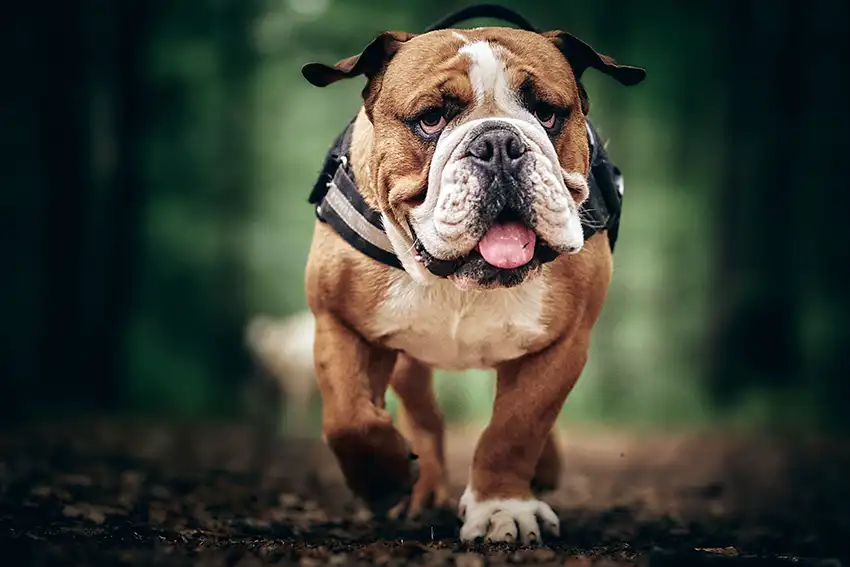
Initially, it is best to start out on a lead around the home and advance to some off-lead training as your dog learns what you want.
They definitely have the intelligence to learn anything if you have the patience, but it is important to understand the breed's capabilities and personality to understand what is possible.
As we mentioned, the Bulldog does not like the heat, and it can run out of steam quite quickly on a hot day. It is best to train them during the cooler parts of the day and only in short spells.
Your local Bark Busters trainer is very experienced at helping you with the training of your Bulldog and knows the best way to get the most out of your pet.
Capabilities of the Breed
The Bulldog was bred to be strong, powerful, effective, determined, and assertive. It's not typically an agile breed and does have some limitations to its capabilities. Having said that, in Australia, we see many Bulldogs riding skateboards, surfboards and jogging along with their humans and even playing football. This does depend on the personality and energy levels of the particular dog.
It's always wise to begin any exercise regime with short bursts of activity, making sure that you gradually build up your dog's exercise routine.
Shy personality types might shun public life, preferring to stay at home where they feel safe and secure, surrounded by things they know. Outgoing and confident personalities will want to join in outdoor activities and be more than happy to join in most of them.
However, monitor your dog's activities and don't let them overdo it. After all, they need you to look after their welfare.
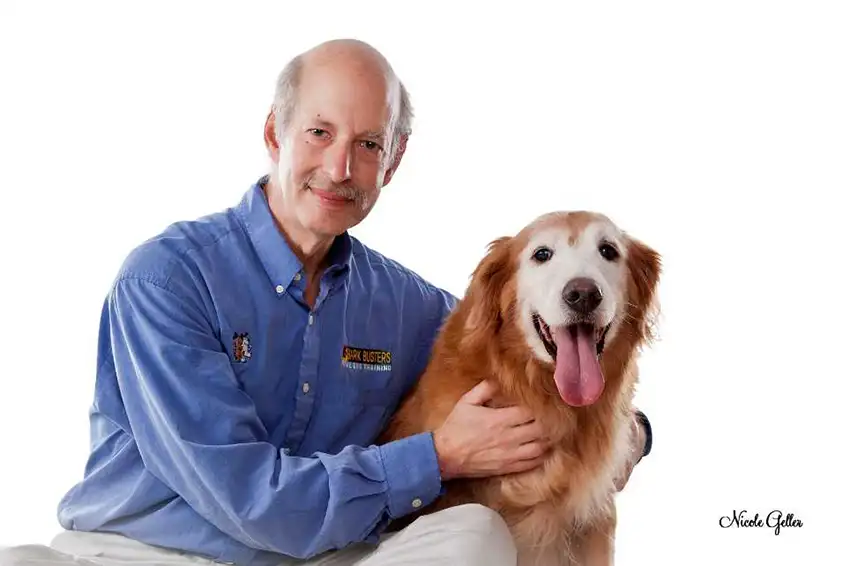
Jeff Drier, Bark Busters USA National Trainer, on the subject of Bulldogs.
Bulldogs are a very popular breed, and many people love their determined personality. They do however have a tendency towards infections in the folds of skin on their faces if they are not kept clean and dry. This can be challenging so it's important to establish a routine as soon as possible. This is certainly an instance when an ounce of prevention is worth a pound of cure. More than a few times we've been asked to help when Bulldogs have developed infections and the folds needed to be cleaned and medication applied. The infections cause the area to become very sensitive and many of these dogs will become reactive to attempts to clean their faces.
Whenever we work with a Bulldog owner, we always work on helping our client's Bulldog build a positive association with getting their face cleaned. Building the positive association before there are problems is much easier than starting when there are already problems, and they are in pain. Depending on how active the dog is and how dirty it likes to get, we suggest they practice daily. Here's a process that has been successful for many clients.
If your dog likes treats, then having a supply of small smelly treats will be helpful. Start by calling the dog to you for petting. Start petting under the chin. Go slowly and talk to your dog in a calm loving voice tone. Slowly bring your hands up to the cheeks and gently probe the folds of the cheeks with your fingers. You can occasionally give a treat if your dog remains calm and non-reactive. Continue gently probing the folds working up on both sides of his face. Give him lots of calm praise as you proceed.
If your dog does react slow down and work outside the folds, gently stroking the cheeks but not going into the folds. Slowly work into the folds as they let you and stays unreactive.
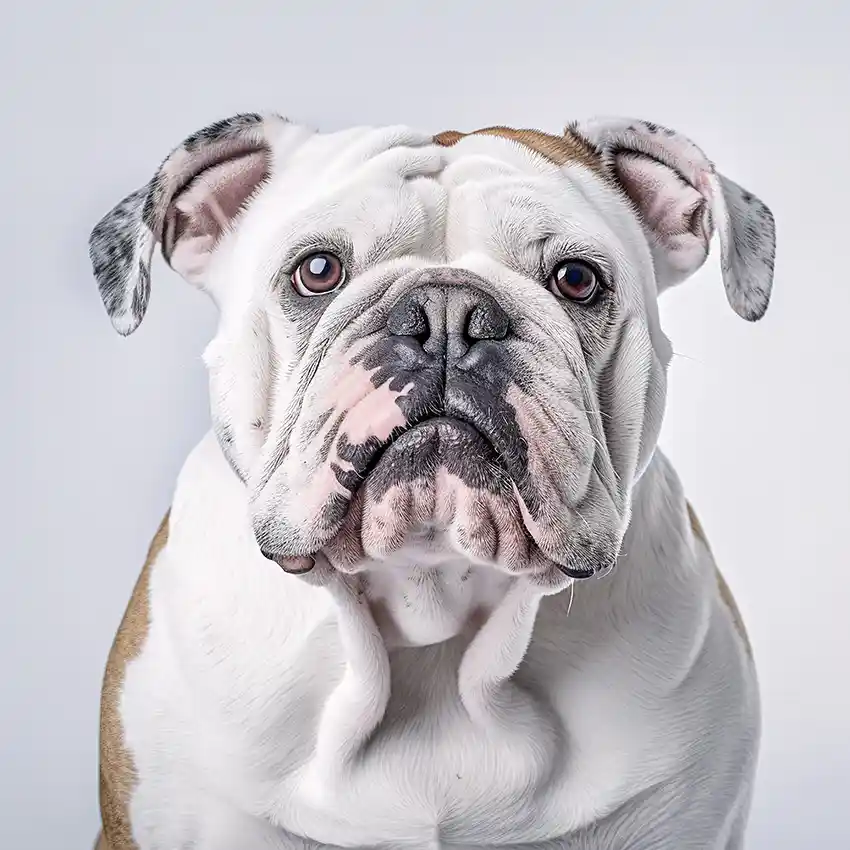
When your dog is accustomed to being touched, bring out what you will be using to actually clean the face. Cotton balls or a soft cloth are good choices. Show them the item and when your dog leans in to sniff it, give them a treat, then put it away. Repeat that a few times until your dog doesn't react when they see the cotton or cloth.
When your dog okay seeing what you will be using, start by using it to pet and stroke his face. Don't immediately start probing unless they are completely fine with you doing it. Get them used to the feel of the item. Use the treats to help them build that positive association. Give lots of calm praise as they stay unreactive.
Next, start cleaning. Dampen the cotton or cloth, give a treat when they sniff the cloth and gently start to clean the folds. After cleaning, take another dry cotton ball or cloth and thoroughly dry the insides of the folds. Go slow, give yourself and your dog plenty of time.
By starting this process of having their face cleaned before there are problems, and building the positive association, the likelihood of infection is greatly reduced. Dogs love getting attention and affection and very often face cleaning can turn into a great bonding time. Once established this should be done daily and if your Bulldog is susceptible to getting dirty than it might need to be done more than once a day. Have fun and if you need help don't forget to contact your local Bark Busters trainer.
Health
Everyday Illnesses and Injuries
- Your Bulldog's health concerns will change over the course of their life. A puppy might be more prone to eat something they shouldn't, a 2-year-old Bulldog may be more likely to rupture a knee ligament, and a senior Bulldog is far more likely to develop cancer as they age.
Bulldogs also have personality and physical traits that may make them more prone to certain conditions. The short snout of a Bulldog makes it more sensitive to warmer weather and prone to heat stress. The wrinkles and folds of a Bulldog also make it prone to skin and eye conditions.
If you are ever concerned about your dog's health, your local veterinarian is a great resource, no matter how small the question.
Genetic Health Concerns
As do many popular breeds, the Bulldog has its fair share of hereditary based issues, like breathing problems, hip and elbow dysplasia and heart conditions. Most reputable breeders now have their breeding stock checked and scored for these hereditary ailments by a veterinarian. You can request proof that the puppy you are purchasing comes from parents that have been checked for these issues.
Many other health issues are also hereditary, so do some research on the ancestry of your puppy and any health issues of that particular breed.
Many rescue organisations also check for common ailments before making them available for adoption.
Preparing Yourself
As a pet owner, you should expect to pay for basic veterinary care like vaccines, spay or neuter, and annual checkups. Many pet owners don't consider the unexpected illnesses and injuries that can occur throughout a pet's life, and they don't prepare for them. Medical insurance can help a pet owner prepare.
Fun Exercises
Hide The Treat
Bulldogs love their food so this game will soon become their favourite. Hide a treat in the home or your garden and let you dog see where you have hidden it. Then encourage your dog to follow your scent to locate the treat. Give him lots of praise when he does. When your dog perfects this you can add a degree of difficulty. Hide the treat without your dog seeing where you have hidden it.
Always be mindful of your dog's safety, making sure that everything you do is not likely to pose a threat to your dog's safety. Check out the surroundings before starting any game or exercise.
Find My Scent
You will need several new or recently washed dog toys for this game. Separate one out for you to place your scent on. Carry this with you for a while, so your scent is embedded on this toy.
Now place only that toy on the ground and say "find".
Use lots of encouragement when your dog picks it up and move backwards, praising his actions. Once they bring this to you, praise lavishly. You can give a treat if you choose.
Repeat this several times until you are sure your dog understands what you want.
Using kitchen tongs, add one of the sterile toys, without your scent on it, and make sure they are about 30cms apart. Let your dog see both toys.
Now give your command "find" once again. If your dog gets the wrong one, remain silent and if they bring it to you, stay silent. Do not say anything, just take it from them with no acknowledgment or fanfare.
Now, encourage your dog to go back for the one which your scent was on and when they bring the correct one, praise lavishly. Be sure to encourage vocally with a high-pitched voice when they get it right.
Repeat this and keep practicing until they always get the right one.
You can add more toys to the mix as your dog perfects the exercise. Always do the same thing when they get it wrong and remain silent, and only praise when they get it right.
Remember to keep all exercises short and fun so your dog doesn't think of it as a task. Never discipline your dog while playing or they won't want to do this exercise at all.
Separating From Your Dog
Most Bulldogs just want to be where you are, but that can lead to Separation Anxiety if you never practice separation. Practice exercises where you separate from your dog for a while, to ensure that they learn to cope being left alone. Start by separating for a minute or two and build it up slowly until you can separate for an hour or two.
Nowadays many people like to have their dog sleeping in their bedroom at night. We don't see a big problem with this as long as your dog's behaviour is not related to this. Even so, it is still wise to ensure that your dog can cope being left alone some nights. In an emergency you many need to leave during the night, and your dog needs to be used to being separated from you without feeling anxious.
Four Basic Needs
Let's examine those four basic needs and why your dog needs them to keep it healthy, balanced and content.

Food - diet / nutrition
A dog's food can affect the health, coat, behaviour, and temperament. Consult with your veterinarian about the best diet for your Bulldog, and your dog's changing food needs as they grow from puppy to adult to senior. A puppy is like having a teenager around. From birth up to six months of age, they will need to eat from two to four times per day, and from six months they will need to eat as much as an adult dog to support all that growth. However, be careful not to overfeed them and avoid obesity.
Don't feed your dog from the table as it will only encourage begging.
We promote a diet that is grain free, low in carbohydrates and without any harmful e-numbers, colours and preservatives. Carbohydrates do add energy that the dog needs to burn off and can make an already hyperactive dog more active.
The right diet, grain free and filled with fruits, vegetables and raw meat will have advantages to how your dog will feel, look and act.
If you want to understand why grains can make a dog more energetic, you only need to think of racehorses and how their trainers give them grain to get highly energetic racehorses. Energy in, equals energy out.
Bark Busters dog trainers are not vets or dietitians, so we urge you to do your own research into the best diet for your dog. A diet that you will be comfortable with.
We do however have vast experience of how highly concentrated grain diets effect behaviour and can cause hyperactivity. This is very prominent in Japan, where most dogs are fed high levels of rice in their diet which can adversely affect concentration and focus.
Safety - through leadership and education
As the leader, your dog will look to you to keep them safe. As we stated earlier, it is important to establish leadership and control early on, or your Bulldog may very well take advantage. English Bulldogs make fine apartment pets and do not require a large yard to run and get their exercise.
All dogs need strong leadership and to know where they fit into the family unit. If they know they have a leader that will make all the decisions, one who is fair and just, they will be happy and content.
On the other hand, if they have no structure in their life, they have inconsistency, and don’t know how things will be from one day to the next, then they will become stressed and may experience health ailments, skin and stomach issues and behaviour problems. Routine and respect must be established. With equal doses of love and structure your dog will feel safe and secure.
Your dog just wants to please you but many times he doesn't know how. If you don't quickly establish yourself as the leader, a Chihuahua will gladly assume this role and chaos will follow.
Shelter - a place to call their own
Bulldogs cannot tolerate warm weather, so it is important they are kept in lower temperate conditions. When purchasing a bed for a Bulldog, consider that many Bulldogs sleep stretched out to their full length most of the time. Therefore, buy a slightly larger bed to accommodate them (that is if you can get your Bulldog off the sofa). Crates are also a great idea, particularly for Bulldog puppies, as it provides a safe area for them while you are busy. Additionally, it is a comfortable, peaceful 'den' of their own, and can help give them a sense of security.
Entertainment - toys & games
Bulldogs need exercise, albeit not a lot. Moderate walks are great for them. They do not know how to swim, so swimming is never recommended. Like all dogs they love to chew. Look for strong, sturdy, treat dispensing puzzle toys, to help stimulate the dog's mental development. Keep the treats as low fat and healthy as possible, as Bulldogs can be prone to becoming overweight.
A very important part of your dog's four basic needs is their need to have something to do. If we want to avoid our pets becoming bored and destructive, then they need a way to fill their day.
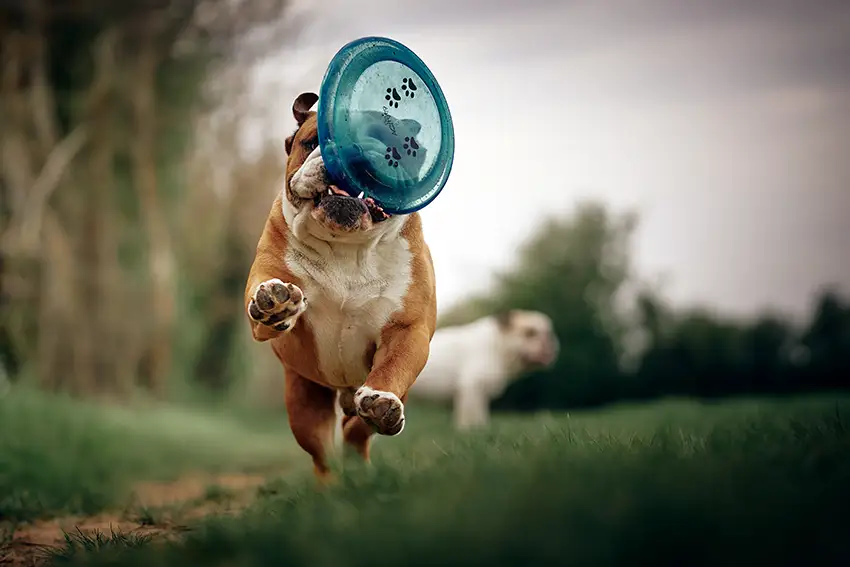
Dogs thrive with physical and mental exercise. Dogs are highly intelligent animals, and they need to keep their brains active as much as their bodies. Entertainment is an important part of their well-being and essential to your dog's overall mental health.
One great toy is the Bark Busters GameChanger® which helps to prevent boredom, stress, and separation anxiety. By filling it with small treats, your dog will have plenty of fun trying to get the treats to dispense.
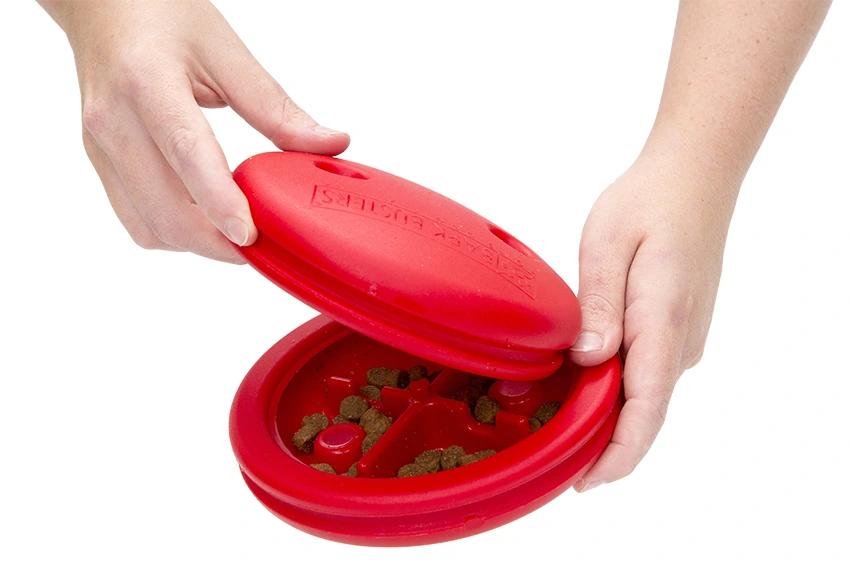
Socialisation and Behaviour
Why do some dogs become aggressive? It can be a result of a lack of socialisation as puppies. If your Bulldog is not properly socialised, he may become timid or start misbehaving.
The critical learning period for your Bulldog is when they are puppies. It is up to every dog owner to develop a socialisation plan. The first most important bond is between you and your dog. Once you have earned your Bulldog's trust and admiration, you will have better results socialising him with other people.
It is not necessary to rush out to find dogs and people for your Bulldog to socialise with. Instead, try and locate a friend or neighbour who has a low energy dog and do all introductions controlled and on lead.
Bulldogs do have an overexuberant way of interacting with other dogs and they can cause dogs to become concerned or worried about them.
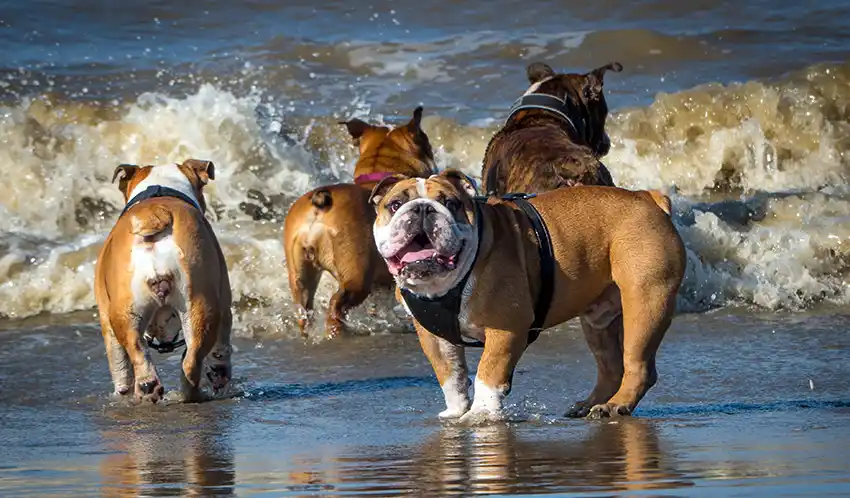
It is not wise the take your young puppy walking through the streets, as that can lead to fear and maybe dog aggression problems in the future. The walk down the street which appears harmless to you, can sometimes be overwhelming to your dog, and meeting another dog head-on can cause problems too. A walk down the street can be quite innocent to us but to a dog it could be a walk into enemy territory. Be mindful that some dogs bark and rush at fences as you walk by. To an inexperienced young dog, this can be terrifying and could lead to dog aggression as your puppy matures.
Start by introducing your puppy to family and friends that you know. When you try to introduce other dogs, start by introducing your puppy to a size of dog that is similar and one with a calm temperament. Also, ensure both dogs are vaccinated too.
Match play mates the same way you would match friends for your child, with a view to their gentleness, their energy level, or their size. Don't choose a highly aggressive or hyper dog or your dog will learn bad habits or worse, it may get hurt.
Just like you choose your friends, choose your dog's friends wisely too.
Introduce your puppy to a variety of life experiences.
Rather than going on a walk with busy cars zipping by and neighbourhood dogs barking at you, select a quiet spot in your front garden, on a bench, or low fence near your home, so your dog gets used to seeing things go by. Be still and remain calm and vocally address any barking or overexuberance.
Take him with you on a car ride. Give him a bath so he learns how to relax in the warmth of the water and learns that it won’t harm him. These types of experiences are what moulds, shape and teaches a Bulldog puppy about life in general. Make sure these experiences are positive for your puppy. Introduce them gradually to the vacuum cleaner so don't spend their life barking at it or chasing it!
Children and Bulldogs
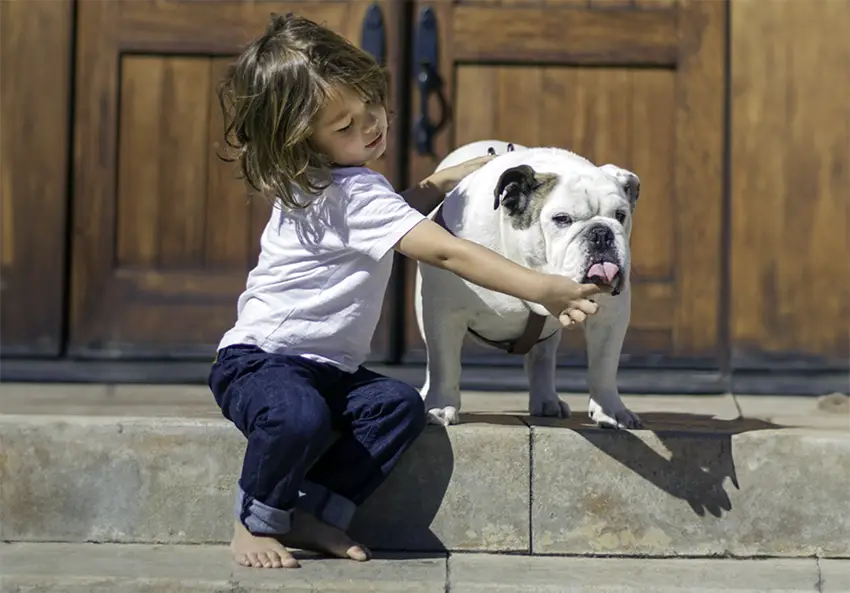
Although Bulldogs are known to be patient and loving with children, never assume this is the case. Never leave ANY dog to a child when unsupervised. The Bulldog was originally one of the bull breeds that received a bad rap but was later classified as a "nanny dog". Why? Because they are generally so good with children, but you must be cautious.
All dogs, regardless of what breed they are should receive some basic education about how to behave around children. Likewise, children also need education on what is permitted when interacting with a dog or playing games.
Introduce your child to your Bulldog with a watchful eye on both. Both puppies and children can be unpredictable in how they react to certain situations and do not understand the consequences of their actions. Both can make innocent mistakes that are costly and dangerous. Children often think they can poke or prod and pull the dog's tail, and then act surprised when the dog reacts and rebels. Children should be taught to never pull, hit, or rough play with a puppy. A puppy that is mishandled can develop phobias and psychological scars that can be carried into adulthood.
With the proper training, your Bulldog will most likely be a great companion and loyal watch dog with your children but to be on the safe side, never leave dogs and children alone together. They always need supervision.
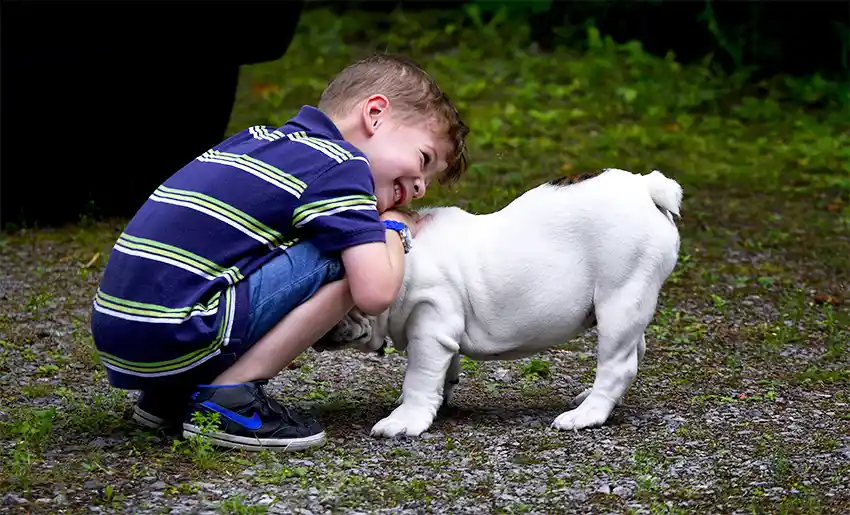
Puppy Selection
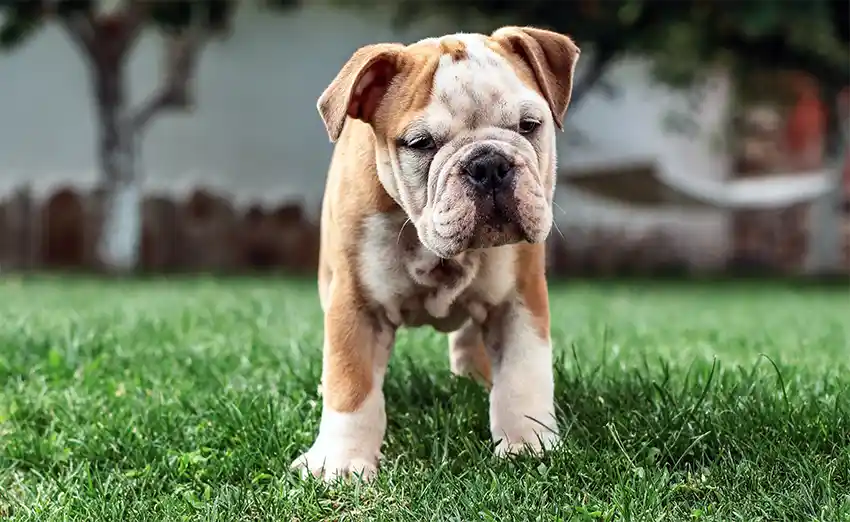
You must be sure you know all there is to know about the Bulldog before you decide if this is the right breed for you. Once you are sure, then selecting the right temperament of puppy is important if you want a dog that fits into your lifestyle.
Puppies and dogs are adorable but do come with a lot of responsibility. You will be getting a living creature that will rely on your care, commitment, and investment.
Selecting the right personality and ensuring that you know all the breed traits and possible genetic faults is important.
Your local Bark Busters trainer can offer more advice on selecting the right puppy and good puppy management, if required.
Puppy Play
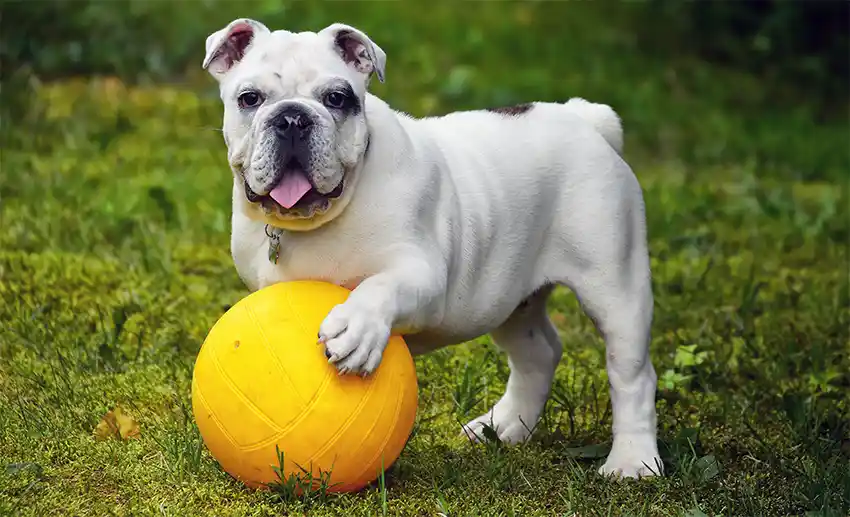
Just because a Bulldog is not up for running marathons doesn’t mean he doesn’t like to play. In fact, many Bulldogs are extremely playful!
Every dog likes to play differently, depending on their breed and their individual personality. Once you figure out which games make your dog happy, you can use them to give them exercise, mental stimulation, and more.
Most Bulldog puppies enjoy being active, playing games, and participating in activities like fly ball, agility, tracking, and obedience. Although not a retriever, many Bulldogs even love to play 'fetch'.
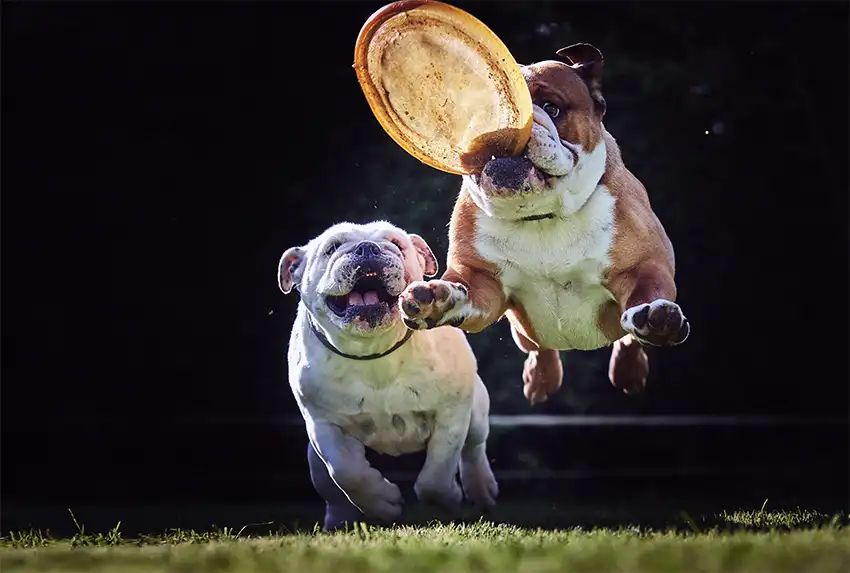
Playing games will keep your Bulldog more confident, more independent, and less scared when you are not around. It keeps them feeling more secure in general which leads to a happier puppy.
Playing in shallow water can be fun for your Bulldog, too! They are more active on cooler days, so keep them cool during the hot weather.
Also, be sure that your puppy is fully vaccinated before venturing out. Speak to your vet who can advise you as to what immunisations are required.
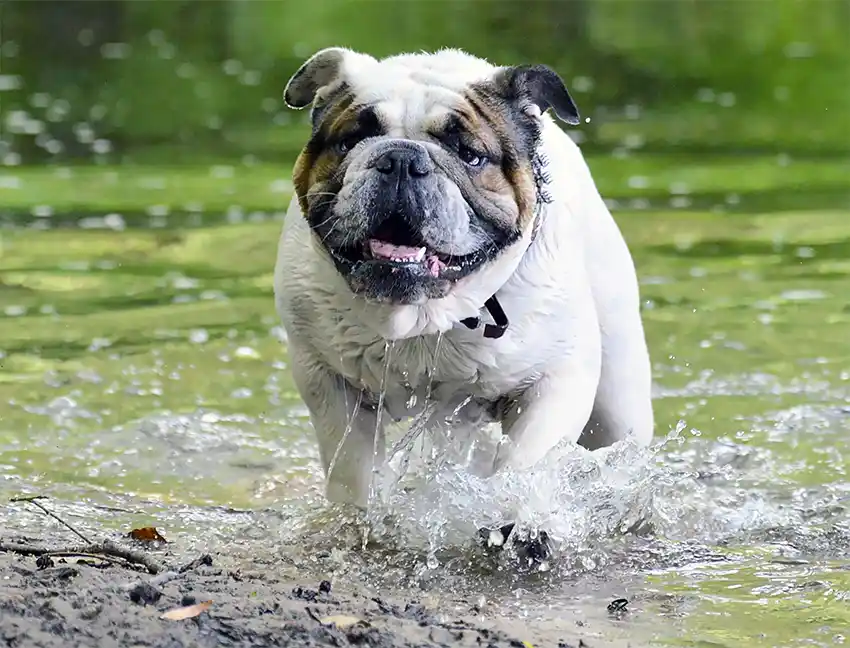
Games to Play
Identify the games that will enhance your dog’s wanted behaviour, versus games that will increase its unwanted behaviour.
We recommend that you don't play hand games or chasing games that encourage a dog to bite or chase, or where you chase your dog or puppy around the house or garden. These games encourage biting and running away, causing recall issues. You will be teaching your dog bad habits, not good ones.
Always be mindful of what you teach your dog and make sure it is something productive. You hold the key to how your German Shepherd will grow and develop, so make wise choices.
Puzzle and Treat Dispensing Toys
When providing entertainment for your dog, we recommend educational toys. These are the ones that you can fill with treats and where your dog works out how to get the treats out. These are highly recommended to stave off destructive behaviours and to provide an outlet for your Bulldog's intellect.
To stave off destructive behaviours and keep your dog physically and mentally challenged, buy toys that slowly dispense treats to keep them occupied, prevent boredom, and help with separation anxiety. These toys can help your dog to direct their energy in a positive way.
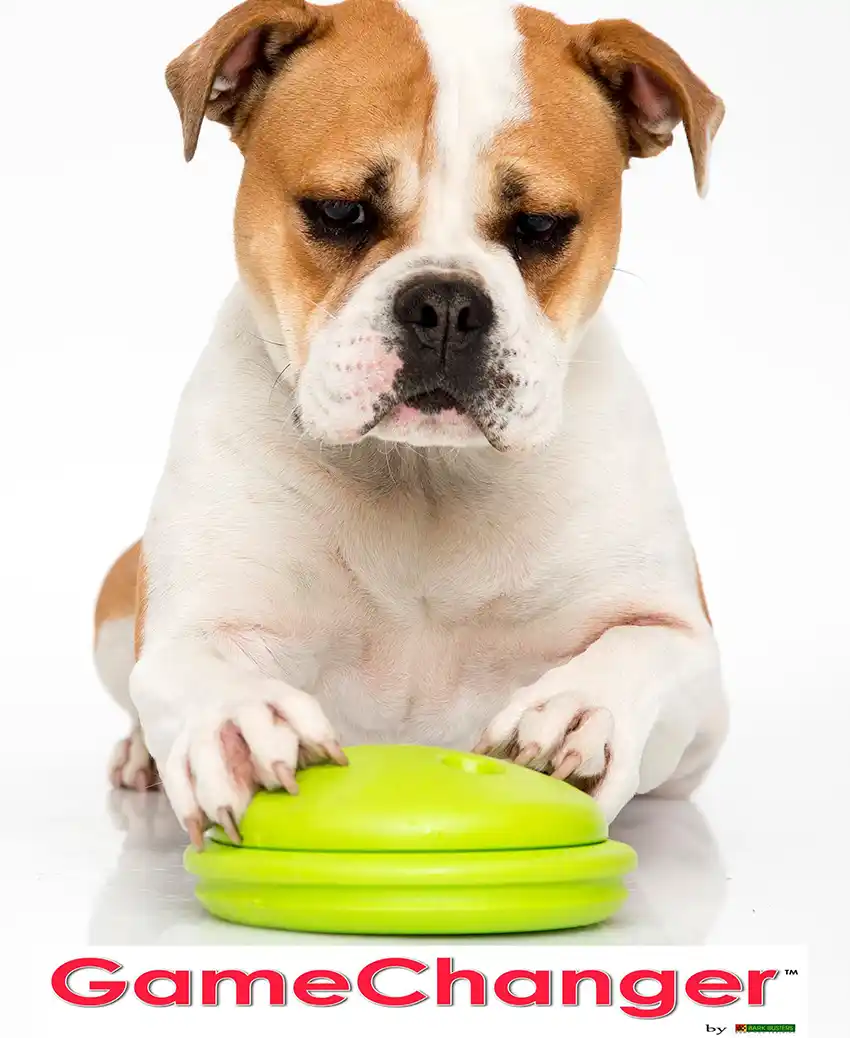
Check out toys like the GameChanger® by Bark Busters, which is a treat and chew toy all in one. The toy is quiet and won't damage your hardwood floors or furniture, unlike hard plastic toys. This toy is flexible and is BPA-free. It won’t break teeth and won't hurt your dog's mouth. Kongs and Buster Cubes are also good to keep your dog entertained too.
Bark Busters Lifetime Support Guarantee
Bark Busters dog behaviour therapists and trainers have trained more than 1 Million dogs worldwide and are renowned authorities in addressing dog behaviour with all-natural, dog-friendly methods. The Bark Busters training is the only service of its kind to provide International dog training guaranteed lifetime support. With hundreds of trainers around the world, Bark Busters continues its mission to enhance the human/canine relationship and to reduce the possibility of maltreatment, abandonment and euthanasia. Contact your local Bark Busters dog trainer to see how they can help.
This article is the copyright of Bark Busters® and is intended for information purposes only. Dog owners should fully research any problems that they may have with their dogs.
